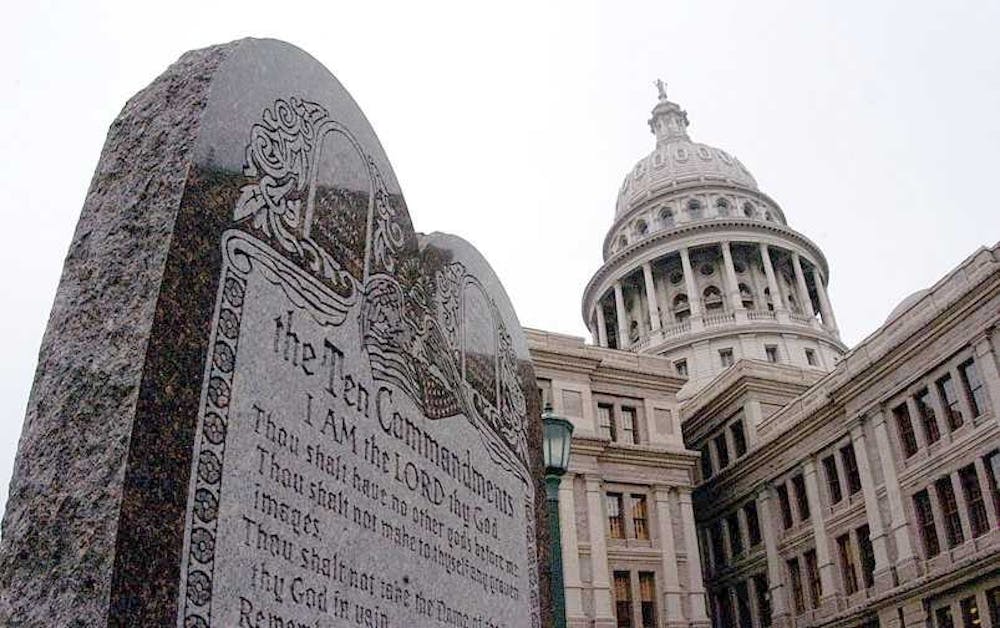Premiered at the 2019 Sundance Film Festival and released shortly after in April, Hail Satan? follows the rise and growth of The Satanic Temple (TST), a “nontheistic religious and political activist group,” according to Wikipedia. The documentary, directed by Penny Lane, draws attention to The Satanic Temple and their confrontations with local governments and media outlets as they advocate for religious pluralism and the separation between church and state.
The film opens with a group of people led by a man in a black coat, horns adorning his forehead, holding a rally in support of not only Satan, but also former Florida Governor Rick Scott. Governor Scott had been pushing for the inclusion of prayer in public schools.
A montage of various news outlets reporting on the event was accompanied by music that would belong in a cartoon playing in the background. This pattern holds throughout the film and emphasizes how TST often uses outrage and offense as a tactic for publicity.
“Once you realize how the media is constructed, it becomes incredibly easy to manipulate,” one TST member says in the film.
The rest of the documentary follows various chapters of TST as they face off against local governments, media outlets and communities confused and offended by their religious beliefs. (To be clear though, TST does not actually believe in Satan. Rather, they think of Satan as a symbol of rebellion against tyranny and defender of personal sovereignty, according to the group’s website.)
In Boston, at Harvard University, the group attempted to host a black mass — an inversion of the traditional Catholic mass — and were met with pushback from the local Catholic community. The documentary shows Catholic priests walking with other demonstrators through the streets as they march in protest of the event, hailing it as the coming of evil.
The event was eventually cancelled hours before it was slated to occur. In one particularly poignant moment, a TST member called out the hypocrisy of the church for calling members of TST sinful when the church had been exposed for hiding decades of sexual abuse cases against children.
The film then goes to Phoenix, Ariz. where local TST members were being met with pushback — including the threat of physical violence — as they attempt to read an invocation at a city council meeting, something that Christigroups had been able to do for years. The montage that followed honestly made me speechless.
Person after person stood up to speak about the importance of Jesus and how the United States was a Christian country. It literally sounds like a church sermon with the added bonus of people applauding in the background. At one point, a citizen even shouts, “Jesus is the way!”
The history of the U.S. as a so-called Christian nation is also explored in the film. Princeton History Professor Kevin Kruse explains how Americans came to see themselves as religious against the backdrop of the Cold War.
Communists living in the Soviet Union, he says, were seen as godless. In turn, Americans attempted to find religion within their own lives as a way to divide themselves from the enemy. Thus, “under God” was added to the Pledge of Allegiance in 1954. “In God We Trust” was also added to the U.S. currency and became the nation’s motto in 1956.
And from then on, Americans began to see themselves as a Christian country with deep religious roots, despite this not being the case.
“What we want to do is force people to evaluate their notions of the United States being a Christian nation…We are supposed to be a nation that doesn’t allow the government to dictate what is appropriate religious expression,” Lucien Greaves, co-founder of TST, said in the film.
The film’s last major arc focuses on a Ten Commandments monument that had been erected on the grounds of the Arkansas state capitol. In response, TST sought permission to display a statue to Baphomet, a goat-headed deity associated with Satan.
If the Ten Commandments monument, a distinctly Christian symbol, was allowed on the capitol grounds, so was a statue of Baphomet, argued TST. If the Ten Commandments monument was taken down however, they would also withdraw their request for a Baphomet statue.
Their argument seemed rational, given that allowing one but not the other would be a case of religious discrimination.
The film ends with a montage of various social activism events put on by various TST chapters. From sock drives for the homeless, to demonstrations against pro-life supporters, to menstruation product drives for shelters, Hail Satan? paints a relatively positive portrait of an easily misunderstood group.
The documentary as a whole was quite funny while also being eye-opening as to how ingrained religion, particularly Christianity, is in the United States.
Whether you’re a devout Christian or a staunch atheist, Hail Satan? is a thought-provoking film worth a watch.





